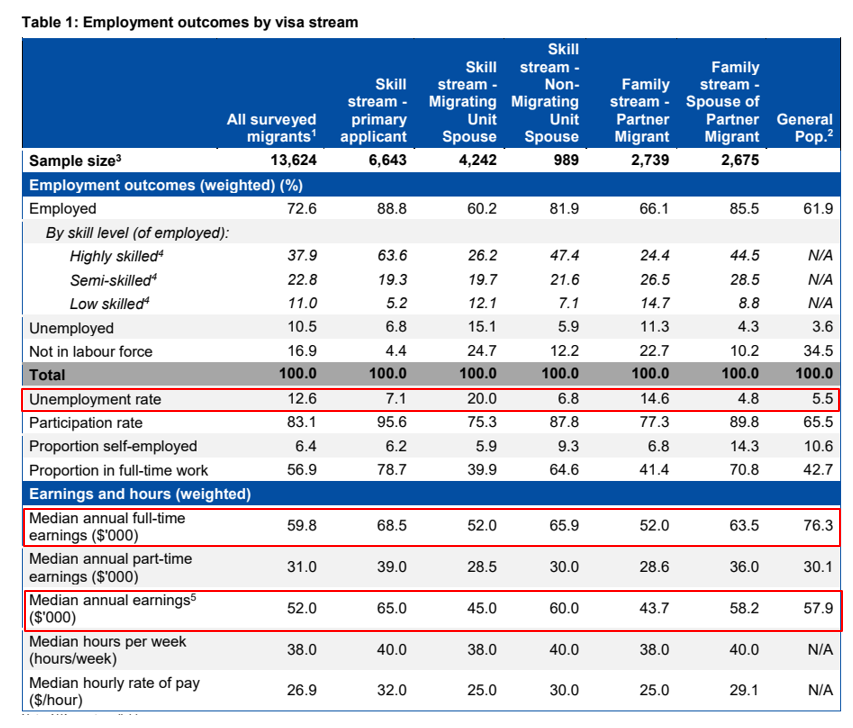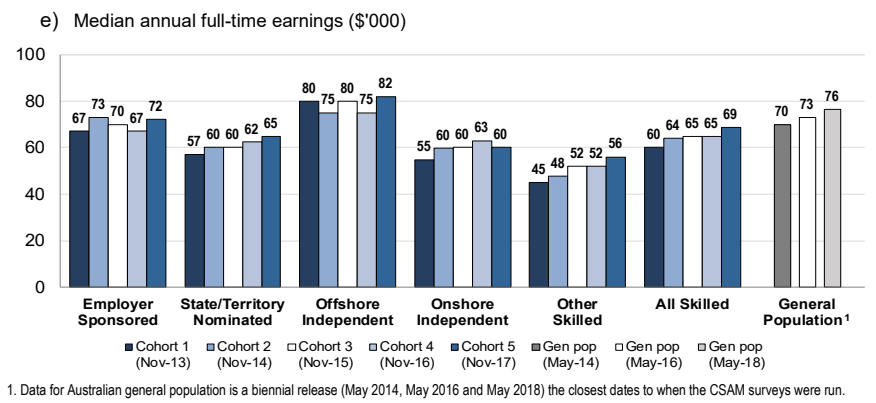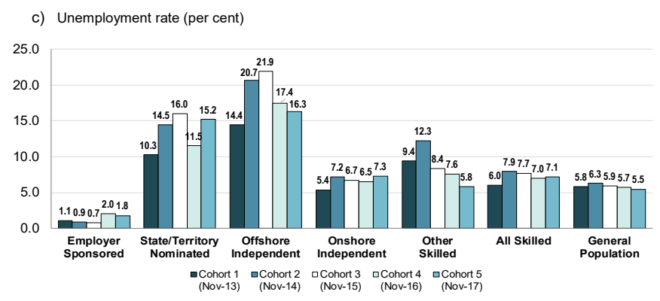Ever since Kristina Keneally suggested lowering immigration to put “Australian workers first”, there has been a procession of commentators claiming that Australia’s mass immigration program does not disadvantage workers.
Today I want to provide evidence from the latest Department of Home Affairs’ Continuous Survey of Australia’s Migrants, which proves unambiguously that Australia’s immigration program is undercutting Australian workers.
The next table summaries the story (the key pieces are highlighted in the red boxes):

As you can see, migrants have significantly worse labour market outcomes than the general population. In particular:
- The median annual full-time earnings of migrants was $16,500 (22%) below the general population in 2017;
- The median annual earnings of migrants was $5,900 (10.2%) below the general population in 2017; and
- The unemployment rate of surveyed migrants (12.6%) was more than double the general population (5.5%) in 2017.
Even if we focus on the skilled stream only, both median earnings and unemployment is far worse than the general population:


These are shocking results. The skilled stream accounts for 60% of Australia’s permanent migration program. They are purported to be highly qualified and brought into Australia to overcome so-called ‘skills shortages’.
These ‘skilled’ migrants should, therefore, be paid well above the general population, which comprises both skilled and unskilled workers.
The fact that migrants are paid so poorly, and experience higher unemployment, suggests that Australia’s “skilled” visa system is really a low-paid, low-skilled program used by employers to undercut Australian workers.
To restore integrity to the visa system, all skilled migrants (both temporary and permanent) should be required to be employer-sponsored (given their far better employment outcomes – see above charts) and paid at least at the 75th percentile of earnings (preferably higher):

Reforms along these lines would ensure that Australia’s skilled visa system is used sparingly to import only the ‘best of the best’, not as a general labour market tool to undercut local workers.

